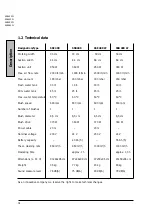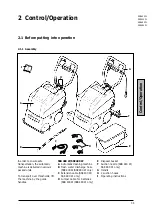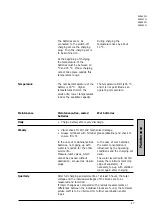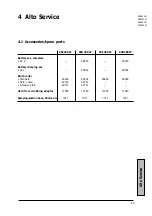
46
SSB 400 W
SSE 400 W
SSB 480 W
SSE 480 W
Maintenance
Operation
DIN VDE 0510, Part 3 applies to
the operation of batteries for
powering vehicles.
Discharging
The vent apertures in the
machine must not be closed or
covered.
Opening or closing of electrical
connections (e.g. plugs,
connection leads) may take
place only in the currentless
state with the mains switch
switched off.
In order to reach an optimum
useful life, discharges are
permissible only up to the point
at which a certain residual
capacity is reached.
In order to avoid total
discharges, the controls of the
machine contain an automatic
switch-off device which
switches off the main consumer
in good time when the cut-off
voltage is reached and signals
this by means of a red warning
lamp.
Discharged batteries are to be
charged immediately and must
not be left in the discharged
state. This also applies after
partial discharging.
Maintenance-free, sealed
batteries
Maintenance-free batteries
may only be discharged up to
70 % of their nominal capacity.
Wet batteries
In the case of wet batteries, a
discharge of up to 80 % of the
nominal capacity is permitted.
Charging
Charging may only be carried
out with direct current.
The charging methods
described in DIN 41773 and DIN
41774 are only to be applied in
the modification approved by
the manufacturer. Therefore,
only the charging sets approved
by the battery manufacturer
are to be used.
Connection only to the charging
set assigned and authorised for
the battery units in order to
avoid the overloading of the
connection leads and plugs, and
to prevent the impermissible
formation of gas and
temperature increase.
Even maintenance-free, sealed
batteries are not free of
gassing.
For charging in closed rooms,
proper extraction of the
charging gases by means of
adequate ventilation is to be
ensured.






































